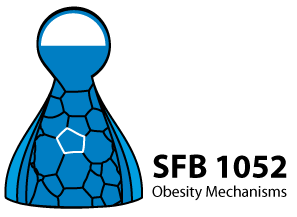Z6 - Identification of molecular mechanisms and druggable targets for the treatment of obesity
Project Z6 supports the CRC in providing computational and experimental information on the structure and function of the studied proteins in particular concerning (i) understanding of the molecular basis of protein function and malfunction, (ii) structure-based drug development, and (iii) characterizing disease-causing mechanisms of protein mutations associated with obesity. Specifically, we will use structural biology approaches such as X-ray crystallography or computation. The objective of this new core project is to establish an iterative loop of computational modeling, structural biology, and biochemical characterization to determine the functional mechanism of genetic variations. Ultimately, these studies can contribute to the development of effective treatment strategies.
Doctoral Researcher
Felipe Engelberger-Aliaga
|
Adresse (Büro):
|
Room E18, Liebigstr. 27A, 04103 Leipzig
|
|
Tel. (Labor/ Büro):
E-mail:
|
---
|
|
Thema des Promotionsprojekts:
|
The genome of each human contains a unique set of genetic variants. Recently the clinical relevance and possible therapeutic potential of genetic variants in adipokine genes including leptin, chemerin, vaspin, neuregulin-4 has gained attention due to the fact that disruption in their secretion may be linked to obesity, adverse fat distribution, insulin resistance, type 2 diabetes, etc. In this context we identify the following knowledge gaps: Given a set of adipokine variants of unknown significance (VUS) how can we predict and rank their propensity of being pathogenic? How is the intrinsic dynamics of particular pathogenic variants impaired due to mutations? Can we develop an automatic way of assessing impairments on protein dynamics?
Our approach to answer these questions consists of: First assessing VUS for multiple adipokines in a high throughput fashion using the in house developed Personalized Structural Biology (PSB) pipeline to assess and rank VUS by their PATHprox scores. Second with more computationally costly techniques like artificial intelligence (AI)-based receptor binding predictions and molecular dynamics simulations, to gain more insights from the in vitro/vivo studies. To answer the third and last question we aim to develop a deep learning method to study the impact of protein dynamics in an unsupervised way by testing VAMPnets and other dimensionality reductions methods like TICA and XGboost random forest approach to generate predictors of dynamics alterations for pathogenic protein variants. |



